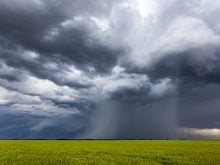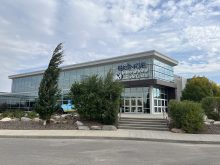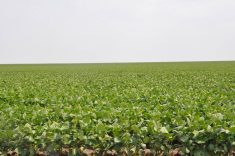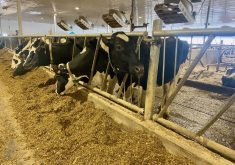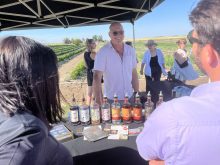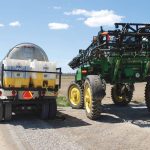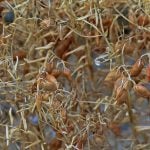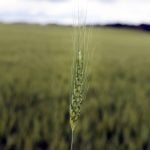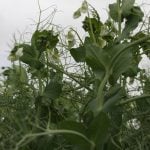Water has been a problem for farmers and landowners in south-central Manitoba since the 1880s, when the first settlers began draining sprawling marshes to grow crops in the rich soil.
The drainage projects created a new set of flooding problems and set upstream farmers against those downstream.
There were no sustainable solutions until farmers, municipalities and governments co-operated to create local scale watershed management and conservation groups that use small dams and other tools to control runoff.
Bryan Oborne, a watershed consultant working with the Tobacco Creek Model Watershed, said the endless fights over drainage can be resolved and the proof is the network of 26 small dams on the watershed built by the Deerwood Soil and Water Management Association in the mid-1980s.
Read Also
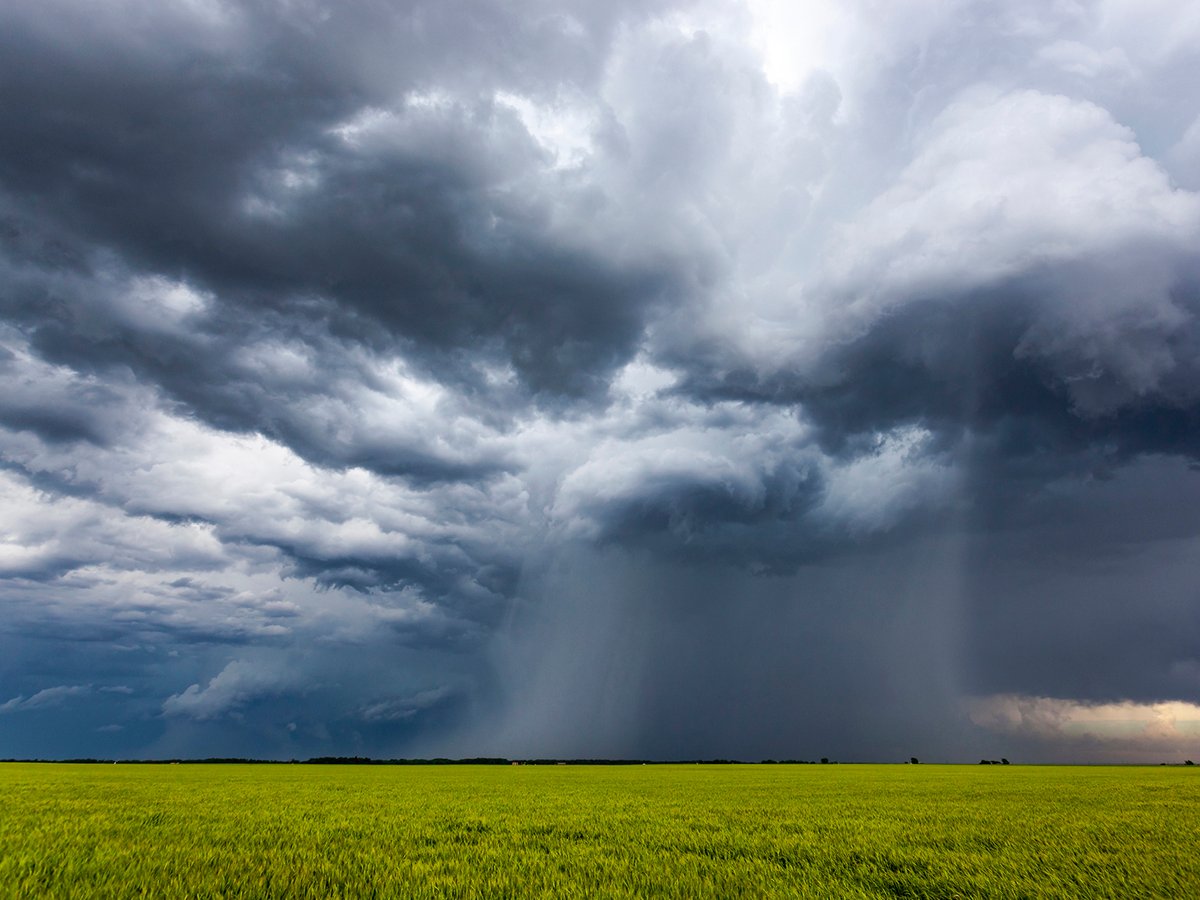
Extreme rain increases as planet warms
In this issue, we are going to wrap up our look at extreme rainfall by examining the different weather patterns that tend to be associated with these rainfall events.
“This debate over drainage policy goes back to 1880. And there is yet to be an example of where it has been solved, except for at South Tobacco Creek, upstream from Miami, where peak flows have been reduced by 25 percent. That’s because of those small dams and the work of some farmers upstream,” he said.
“We need to replicate that. We need thousands of small dams on the escarpment, and we need larger storage, ideally restored wetlands, downstream.”
The flooding problems are the result of the region’s geography.
Creeks and streams originating in the upland of the Manitoba escarpment flow east to the Red River lowland.
The lowland is table flat and underlain by heavy clay. Before settlement, water flowing from the uplands did not cut continuous channels to the Red River but rather spread out into great marshes and swamps, particularly during the spring melt.
In 1898, work began on a project to drain the Great Marsh, later called Boyne Marsh, which covered almost two million acres west of the Red River Valley. Using large steam shovels mounted on scows, three ditches emptying into the Morris River at Rosenort were dug in a project that took 17 years. A similar method was used to drain the slightly smaller Tobacco Creek marsh a few kilometres to the south.
But the drainage created its own problems.
Without the vast swamps to absorb spring melt and summer rainstorms, the natural and new artificial waterways in the area carried much more runoff than before, leading to flooding, erosion and silt deposition, as well as disputes between upstream and downstream farmers.
The 26 small dams on South Tobacco Creek show that the drainage solution should be based on watersheds rather than municipal boundaries, Oborne said.
“If you look at a map of 100 years ago, it’s stunning how much has been lost. The water is still there, it’s just that all of it goes downstream in a drain and we’ve been fighting about making drains larger and maintaining them in this province since 1880.”
As area residents know, mega projects often create mega problems. In the early 1980s, the provincial government told landowners in the Rural Municipality of Thompson that it planned to solve chronic flooding problems downstream by building a large earthen dam just a few kilometres west of Miami.
A Prairie Farm Rehabilitation Administration study in 1971 had conducted a cost-benefit analysis for building a single dam to control flash floods from spring melt and heavy rainfall on the south arm of Tobacco Creek, which flows off the steep eastern edge of the rugged Manitoba escarpment, falling more than 60 metres in less than three kilometres.
However, at $1 million, the project was deemed too costly, and furthermore, landowners were reluctant to hand over the local water management keys to government officials.
In 1984, 150 landowners formed the Deerwood Soil and Water Management Association, which advocated building a series of small dams, or small headwater retention structures.
The project was approved, and with the co-operation of the 46 landowners in the South Tobacco Creek watershed, construction began on 50 small dams on upland tributaries between 1985 and 1996.
The Deerwood association built 26 of them in the Tobacco Creek watershed and in 1991 it launched the South Tobacco Creek Project with the goal of evaluating their effectiveness at controlling flooding and erosion.
A 1995 study showed that the dams had a payback period of 16 years, mainly from reduced repair work on municipal infrastructure estimated to be worth $25,000 per year.
Emboldened by the success of their experiment, stakeholders in 2002 decided to create the Tobacco Creek Model Watershed, which was to become a 400 sq. mile “living watershed laboratory,” addressing agriculture, environment and community development issues.
The Deerwood association joined forces with the Pembina Valley Conservation District and five RMs to create a research network to study watershed solutions for broader application in other areas.
Since then, scores of university researchers have visited the site to take samples of air, soil and water to test for sediments, nutrients and pesticides as well as draw from a massive database of environmental information gathered over several decades.
The ability to look at the results of years of cumulative watershed studies can change one’s perspective, especially regarding what people consider common sense, said Les
McEwan, president of the Deerwood Soil and Water Management Association.
When zero-till was introduced on the South Tobacco Creek watershed, many farmers thought that they would be able to scale back the earthen dams and downsize reservoir capacity because it was widely believed the practice would reduce soil run off.
“Then we found out that it didn’t make a damn bit of difference,” McEwan said. “People make these kinds of assumptions – and they may seem reasonable – but they are not necessarily right.”
Local farmers have been receptive to a multitude of requests for information from researchers because they recognize that collaborating with scientists could help create a model that would work for other watersheds, he said.


